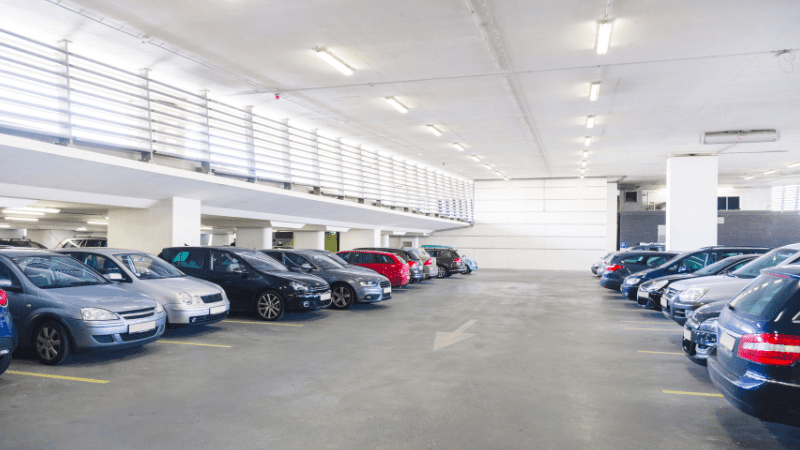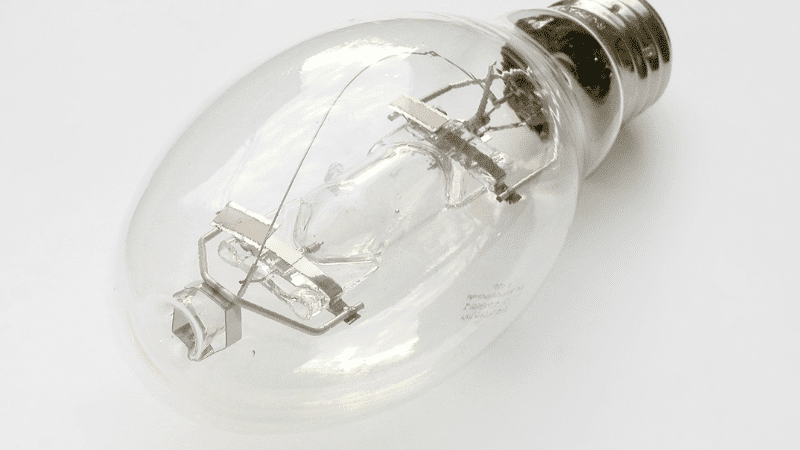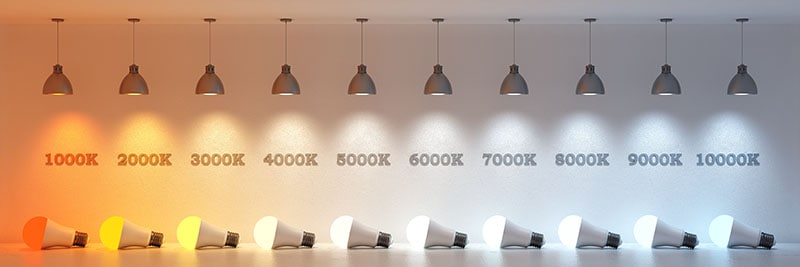What Are Parking Lot Lights and What Are They Used For?
Parking lot lights refer to exterior lighting erected on poles and parking lots. They are even used to provide much-needed outdoor lighting to adjacent driveways and pathways. This outdoor lighting, which illuminates pedestrian and vehicle areas, can consist of more than one light fixture on poles.

These are some of the reasons why you need parking lot lights. They can turn dark parking basements or outdoor parking facilities into well-lit spaces. This is also why they are sometimes referred to as high-performing lights. Not only does it help your customers find their vehicles at night, but it also contributes to the safety of vehicles and your customers.
These parking lot lights have many other uses. They can be used for more than just parking lots. Businesses sometimes use them for adjacent pedestrian areas and driveways near the parking lot. Sometimes, you can find the same light set-up for outdoor sporting and floodlighting.
Some people refer to parking lot lights as “parking lot light poles” simply because they are mounted on poles. Since one of the most preferred types of light is LED variants, they are sometimes called “LED light poles.”
How tall should the light poles be?
The average height of parking lot light poles is generally between 15 feet to 20 feet. This is the sweet spot to help the light poles cover as much ground as possible with a wide beam of light. Anything below 15 feet could require more light poles to cover your parking lot. In the end, you could be increasing your lighting costs.
What is the difference between a parking lot light and a street light?
The most significant difference between parking lot lights and street lights is the light they cast. Street lights only need to illuminate a narrow street pavement, so the beam of light they cast is narrow. On the other hand, parking lot lights need to cover a broader area, so they need to cast a larger beam to illuminate wide areas.
How Do Parking Lot Lights Work?
Parking lot lights work by simply illuminating a specific area designated as a car parking facility. This is important, especially at night. It helps drivers feel safer leaving their cars at night. It also helps give more sense of security when car owners walk back to their cars in the middle of the night. For business establishment owners, it also lowers safety risks at night.

Sometimes your hours or operation stretch into the deep hours of the night. There will be times you might find yourself operating for 24 hours. In these instances, parking lot lights immediately offer security for your customers. This is important, especially when walking to their vehicles at night.
The light in the parking lot helps them find their cars much faster. Not only that, if you have CCTVs installed in your parking lot, the lights you install can help make the feed clearer, especially at night. Security cameras and well-thought parking lot lighting can be additional deterrents to scrupulous activities in your parking lot.
What Are The Different Types Of Parking Lot Lights
Some of the older parking lot lights are classified as High-Intensity Discharge (HID) lamps. These can fall into metal halides and even those high-pressure carbon lights. And for the older lamps, mercury vapor lamps are still in circulation. Still, many companies have recently been using LED parking lot lights.
Let’s take a look at the differences between them:
Metal Halide Lamp
You get this parking lot light when you combine halogen elements and metal. There are other components to it, like uranium hexafluoride and sodium chloride. Though sodium chloride is known as salt to many, do you know that uranium hexafluoride is the fuel component in energy reactors?

The advantage of using metal halide is the quality of light that it can put out because of the high color temperature. However, the downside is that they take a long warm-up period to reach their operating temperature. At times, you need about 20 minutes of warm-up time. It would be best to replace the light bulb often, increasing maintenance and operational costs.
Mercury Vapor Lamp
This is the oldest type of HID light, developed and produced in the 1930s. The bulbs use mercury vapor discharge from an arc tube with fused quartz. Once an electrical current is introduced into the tube, argon gas mixes with vaporized mercury droplets to produce light.
There are two types of mercury vapor lamps: the “T” type, which automatically closes when the outer bulb is damaged, and the “R” type, which does not self-extinguish even with a broken outer bulb. The outer bulb is important because it filters out harmful UV radiation from the lamp.
This type of light was once considered the best light source. That is until the Energy Policy Act of 2005 heavily regulated mercury use. This prohibited the importation and manufacturing of mercury vapor. If you still use mercury vapor lamps, you have an ancient lighting system and are due for an upgrade soon. A great alternative is exploring LED parking lot lights.
High-Pressure Sodium

Much like Metal Halide lamps, high-pressure sodium lights combine gases to create light. The biggest difference is the color of the light they emit—metal halide gives off a white light, and high-pressure sodium light is a warm yellow glow. However, it also needs time to warm up, has a shorter life span, and consumes more energy compared with LED lamps.
Parking Lot Lights using LED
LED is an acronym for light-emitting diode technology. It is slowly becoming the go-to choice for lighting needs, including parking lot lights.

It works because a microchip is powered by electrical current, which produces light. Although using LED might be more costly at first, the overall benefits outweigh the initial costs. Its ability to effectively provide the necessary brightness, durability, and energy efficiency makes it a better choice for parking lot installation.
What Factors Should Be Considered When Choosing Parking Lot Light Fixtures?
When choosing parking light fixtures, some factors are wattage, lumens, color temperature, and even pole height. Let’s take a closer look at each to help you decide which type of parking lot light you need to use in your establishment.
- Wattage
This refers to the energy or electrical current you need to produce light. This meant that the higher the wattage, the brighter the light—same light output with power and brightness. So if you needed to light up a huge area or space, you would normally look for the light with the highest wattage. On the downside, this also meant that you use much power to light up big areas. While it still indicates the amount of power the light uses, the brightness level is slightly different.
- Lumens
As LED is slowly making its mark in the lighting industry, it also introduced a new way of determining the brightness of light – lumens. This means that the higher the lumens, the brighter the light. You no longer have to rely on the wattage of the light. What you are now looking for is energy efficiency. This is because even lights with low wattage can give you high lumens. This means even with low power, your lights can be very bright.
Light can also vary by temperature measured in Kelvin degrees, normally between 10,000 to 1,000. This is based on how metal objects are heated until they reach their glowing point. This process gives off colors like orange, yellow, blue, and others. Warm lights are at the lower end of the spectrum, giving off a yellowish light. The higher the number, the more it gets to cool temperature giving off a blueish tone of color.

- Mounting Height
The height of your light poles is also important when setting up and installing parking lot lights. The idea is that the higher the height of the pole, the more area it can light up. The average mounting height could be as high as 20 ft. Of course, you need to consider the lumens of the light as well. Even if you mount your lights high, if they cannot produce the brightness you need, the height will not help spread the light.
- Mounting Type
You also need to ensure that the light is installed correctly. This means choosing the best mounting type for your needs. There are a few to choose from, like the trunnion mounting, commonly found in floodlights and attached to the pole, wall, or arm. The slip fitter mount allows you to put your light on a bullhorn. The most straightforward mounting option is the straight arm mount. As the name suggests, your lights are installed directly on the light pole.
- Costs
One of the most important factors you need to consider is cost. LED seems to be the most logical choice for parking lot lights, based on the light options discussed earlier. You might argue that initial costs are higher than other types of light, but their functionality outweighs this cost. LED lights are brighter than conventional ones, even with low wattage, and last much longer. This can also work even for parking garage lighting.
How Much Do Parking Lot Lights Cost?
You might expect to spend between $3,000 and $5,000 for an average outdoor parking lot. However, you have to understand that several factors must be considered. Much like the ones we discussed earlier, here are the type of light, pole height, light mounting option, and others. The cost will also vary if you are building a new one or simply retrofitting an already existing parking lot light system with new lights.

Do not worry—we at RC Lighting can help you determine your initial capital expense for your parking lot light system. We can review your parking lot blueprint and provide professional advice on how to maximize your budget for your lighting needs.
What Are Some Tips For Reducing Installation Costs Without Compromising Quality Or Safety Standards?
If installing it for the first time, it is better to use LED parking lot lights. Studies show that they can save as much as 80% on power consumption compared with other types of light. It would be best to have a solid understanding of your parking lot layout. This can give us the data we need at RC Lighting to help you plan your lights across your parking lot and know how many fixtures you need.
As a general rule, the higher the light pole, the wider the beam it can give off. This allows it to cover as much ground as possible, which can help you save money on installation without compromising the quality of the build.
Always remember that it is better to invest in safe, up-to-standard lighting equipment initially. Looking for an illegal way to cut corners and costs could only cost you more in repairs and maintenance in the long run. This highlights the need to work with professional parking lot light installers to ensure you do everything correctly.
How To Maintain Parking Lot Lights?
To maintain parking lot lights, you need to regularly inspect your lights, get ahead of costly repairs by fixing even small problems, clean often, and, if needed – upgrade to LED parking lot lights. Let’s take a closer look at these tips to make your lights provide illumination for years to come.
- Regular inspection
You must regularly walk your parking lots and inspect the lights on the floor. Check if they are still able to cover your entire parking lot. It is also a good idea to inspect the poles to ensure that they are sturdy and that there are no signs of weakness or rust. It will also help if you check the wiring to identify any exposed areas you have to fix.
- Fix right away
Address all the problems as soon as possible during your inspection. This can help you avoid costly and completely avoidable repairs later on. Small problems get bigger over time, especially if you ignore them.
- Regular cleaning
It helps to regularly clean your parking lot lights to ensure they operate optimally. There could be times when you notice that the light cannot cover all your parking lot, only to find out that they just needed cleaning. It will also benefit you if you look at other areas, like the light poles, the wires, and all your electrical connections. This ensures they are free from dust, debris, and other particles that could affect their performance.
- Upgrade to LED
Perhaps the main takeaway from the points raised in this article is that LED is the most efficient lighting system for your business’s parking lot. And when it comes to maintenance, there are no dangerous gases you need to keep an eye out for. It can also last longer than most types of parking lot lights. Not to mention, you save a lot more in power consumption. But you must check on it regularly to ensure it performs well.
Conclusion
No question, LED parking lot lights are your best option for providing an efficient lighting system for your parking lot. It also helps you save money because LED lights consume less power without sacrificing their lighting ability. Add the fact that it also lasts longer than most parking lot lights in the market today.
Why Get LED Parking Lot Lights from RC Lighting?
Do not feel overwhelmed by all the details you need to factor in regarding your parking lot lights. RC Lite can help remove that stress with professionals and experts in the industry. Part of our service is to help you understand what you need and match that with your budget.
Contact us today so you can start installing your parking lot lights.



